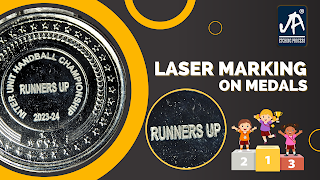The Art of Etching: Crafting Intricate Designs with Precision
In the world of creative design and industrial manufacturing, etching has long been a cherished technique for adding intricate and precise details to a variety of materials. This art form, often used in crafting detailed patterns and designs on metals and other surfaces, has evolved over time to offer a range of methods. In this article, we'll explore the traditional chemical etching process and the innovative world of laser etching companies.
The Chemical Etching
Process
Chemical etching, also known as chemical milling or
photochemical machining, is a traditional method of selectively removing
material from a surface to create intricate patterns or designs. This process
involves several key steps:
1.
Design
Preparation: The first step in chemical
etching is to create a design or pattern using CAD software or other design
tools. This design is then transferred to a mask or stencil.
2.
Cleaning
and Surface Preparation: The material to be etched is thoroughly cleaned to
remove any contaminants that might interfere with the etching process. A
photoresist material is then applied to protect the areas that should not be
etched.
3.
Exposure:
The mask or stencil is placed over the material, and the assembly is exposed to
ultraviolet (UV) light. The UV light hardens the photoresist in the areas where
the design is located.
4.
Development:
After exposure, the material is developed by washing it in a chemical solution.
This removes the unexposed photoresist, leaving behind the design pattern.
5.
Etching:
The material is then submerged in an etchant solution that selectively removes
the exposed areas of the material. The result is the desired etched pattern.
6.
Rinsing
and Finishing: The material is thoroughly rinsed to remove any remaining
chemicals, and the photoresist is removed. The finished etched piece is cleaned
and prepared for further processing or use.
Precision and
Artistry in Chemical Etching
Chemical etching allows for an extraordinary level of
precision and detail in the design process. It is a versatile technique that
can be applied to various materials, including metals like stainless steel,
copper, and aluminum, as well as plastics and ceramics. The ability to create
intricate, complex designs makes it a popular choice in industries such as
electronics, aerospace, and fine arts.
The Rise of Laser
Etching Companies
While chemical etching has a long and storied history, the
advent of laser technology has brought about significant advancements in the
field of etching. Laser
etching companies employ high-powered lasers to precisely remove material
from a surface, creating intricate designs with unparalleled accuracy and
speed.
Advantages of Laser
Etching
1. Precision: Laser etching offers
unmatched precision, allowing for the creation of intricate designs with fine
details.
2. Speed: Laser etching is a fast and
efficient process, reducing production time and costs.
3. Versatility: Laser etching can be
applied to a wide range of materials, including metals, plastics, glass, and
ceramics.
4. Consistency: Laser etching produces
consistent results, ensuring that every mark is of the same quality.
5. Minimal Material Waste: Unlike chemical
etching, which can produce chemical waste, laser etching generates minimal
waste, making it more environmentally friendly.
Applications of Laser
Etching
Laser etching has found applications in various industries,
including:
·
Electronics:
Marking and labeling electronic components with serial numbers, barcodes, and
logos.
·
Aerospace:
Etching part numbers and safety information on aircraft components.
·
Medical
Devices: Marking surgical instruments and medical implants for
identification and tracking.
·
Automotive:
Adding decorative elements and branding to automotive components.
·
Jewelry:
Creating intricate designs on precious metals and gemstones.
.PNG)


Comments
Post a Comment